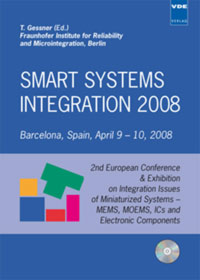Recent advancements on semiconductor radiation sensors for digital mammography
Konferenz: Smart Systems Integration 2008 - 2nd European Conference & Exhibition on Integration Issues of Miniaturized Systems - MOMS, MOEMS, ICS and Electronic Components
09.04.2008 - 10.04.2008 in Barcelona, Spain
Tagungsband: Smart Systems Integration 2008
Seiten: 8Sprache: EnglischTyp: PDF
Persönliche VDE-Mitglieder erhalten auf diesen Artikel 10% Rabatt
Autoren:
Lozano, Manuel (CNM-CSIC, Barcelona, Spain)
Inhalt:
The possibility of imaging the interior of the body has had a big impact in medicine. Among the many different techniques existing today, X-ray radiography still plays a very important role in the diagnose of many diseases. Radiographic screen films are being used since the invention of the technique in 1896, and are still in use in many hospitals. Their characteristics have been improved with time, and the performances nowadays are very good. Nonetheless they are intrinsically limited and inefficient and there is room for improvement both in image quality and in radiation dose for the patient thanks to electronic technology. The first step in digital radiology was the use of fluorescent films read by a laser system. Full digital systems were developed using scintillator materials and CCD or amorphous silicon TFT imagers. One-way to improve the efficiency is to choose a good X-ray absorber and hence this will lead to a better signal to noise ratio. For example instead of using phosphorus plate as an absorber, CsI can be used. Nevertheless this is an indirect x-ray photon capture. X-ray photons are first converted to visible photons, and then to electric charge inside the semiconductor.


